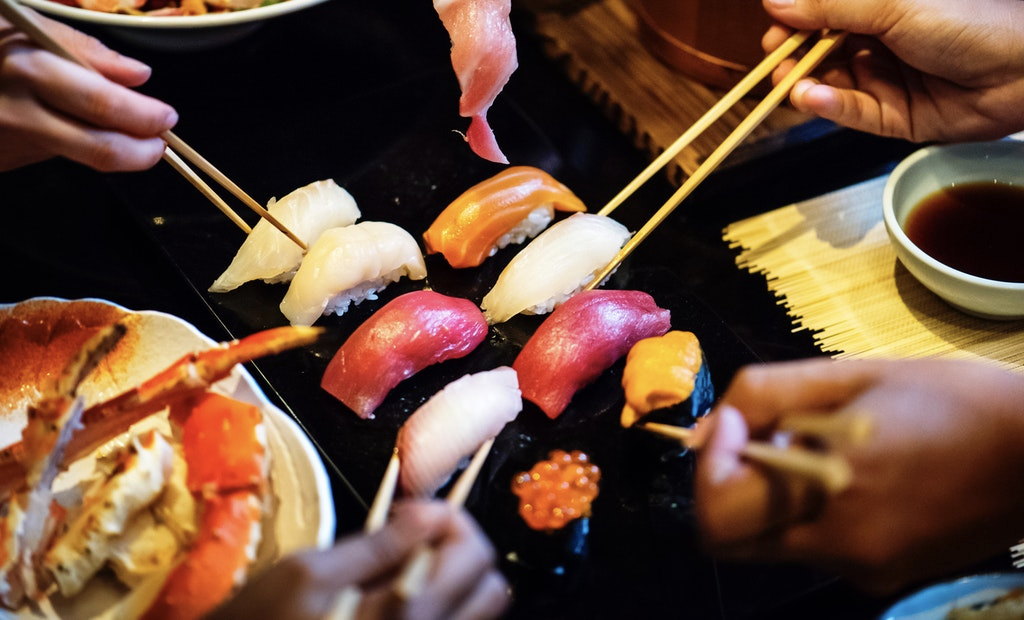London’s love affair with Japanese street food

It wasn’t long ago that street food in Britain entailed a greasy hot dog from a roadside burger van or a few doughnuts from the local funfair. It’s come a long way since then. In the past few years street food fever has gripped the nation as independent businesses capitalise on the UK’s growing obsession.
Questionable kerbside offerings have been replaced by pop-up restaurants and authentic street food huts, serving food from around the world and run by talented artisans passionate about cuisine. The street food scene has really taken off in London where Vietnamese banh mi, wood-fired pizzas and ceviche have become just as popular as the well-established kebab and burger.
It signals a change in attitudes towards eating: not only do foodies want a down-to-earth and immediate way of eating, they’re looking to taste something from a little further afield.
More recently, Washoku, or Japanese cuisine, has been at the forefront of the street food revolution. Gourmets are broadening our horizons, expanding beyond globally popular sushi and delving deeper into Japan’s rich culinary repertoire.
Japanese cuisine attracts huge crowds at street food markets
Starting with pop-up markets in the hippest neighbourhoods of East London, the street food phenomenon has now spread across the capital. Events and night markets are filled with food stalls and traders introducing us to delicious lesser-known delicacies from around the world.
The longest queues are often those at Japanese street eateries. Yu Kyu, London’s first mobile Tonkatsu food kitchen, has been a resounding success. Katsu, as it is known colloquially, is a traditional pork dish that Yu Kyu serve with curry, rice or in a brioche bun.
Brixton Village’s Japanese restaurant Okan is inspired by the street food of Osaka. Moto, head chef and founder of the restaurant, specialises in okonomiyaki – savoury pancakes that are served with a variety of toppings. Moto has been serving okonomiyaki since 2002, initially from street stalls around Brick Lane before moving into his permanent Brixton premises.
The izakaya invasion has introduced us to new Japanese delicacies
Since arriving on the streets of London, the izakaya has transformed Japanese cuisine in the capital. This new breed of restaurant typically serves snacks such as yakitori (meat skewers) and other small plates. In their native land, izakayas are popular places for after-work drinking and are often likened to traditional Irish bars and American saloons.
The reinvention of izakayas in London has largely been in the form of pop-up restaurants. Flesh & Buns and Shackfuyu, both owned by Australian chef Ross Shonhan, began life as pop-ups and serve a range of Western-style izakaya food. Kurobuta specialises in minimalistic umami-rich snacks and is another that graduated from pop-up to permanent London fixture.
Similar to Italian aperitivo culture, drinking is an integral part of visiting an izakaya – it’s name literally translates as “the roof with alcohol”. Moving beyond traditional sake, Mizuwari is a popular style of cocktail where spirits, particularly shochu and whisky, are mixed with water. Cocktails and casual dining may seem like a strange marriage, but it’s a hit in Japan and its popularity is growing in the UK.
Japanese tea houses are popping up across the capital
Mizuwari and sake are not the only beverages Japan is famed for – it has a long history of cultivating and drinking tea, far outweighing our reputation as a nation of tea lovers. Tea forms an important part of Japanese culture and, considering our own tea drinking habits, it’s perhaps no surprise that Japanese tea houses are being embraced in the capital.
Iconic London department store Liberty partnered with Japanese tea specialists Tombo to launch a pop-up matcha café. The space, which opened for six weeks, served Tombo’s signature matcha latte along with iced teas, ginger teas and a variety of blends brewed in traditional cast iron teapots.
Just like green tea, Japanese cuisine appeals for its cleanliness, purity and perceived health benefits. Cravings for Japanese street food seem to be insatiable as our palates become more accustomed to Eastern flavours. Much like the waistlines of its patrons, future expansion is inevitable.
The editorial unit

























Facebook
Twitter
Instagram
YouTube
RSS